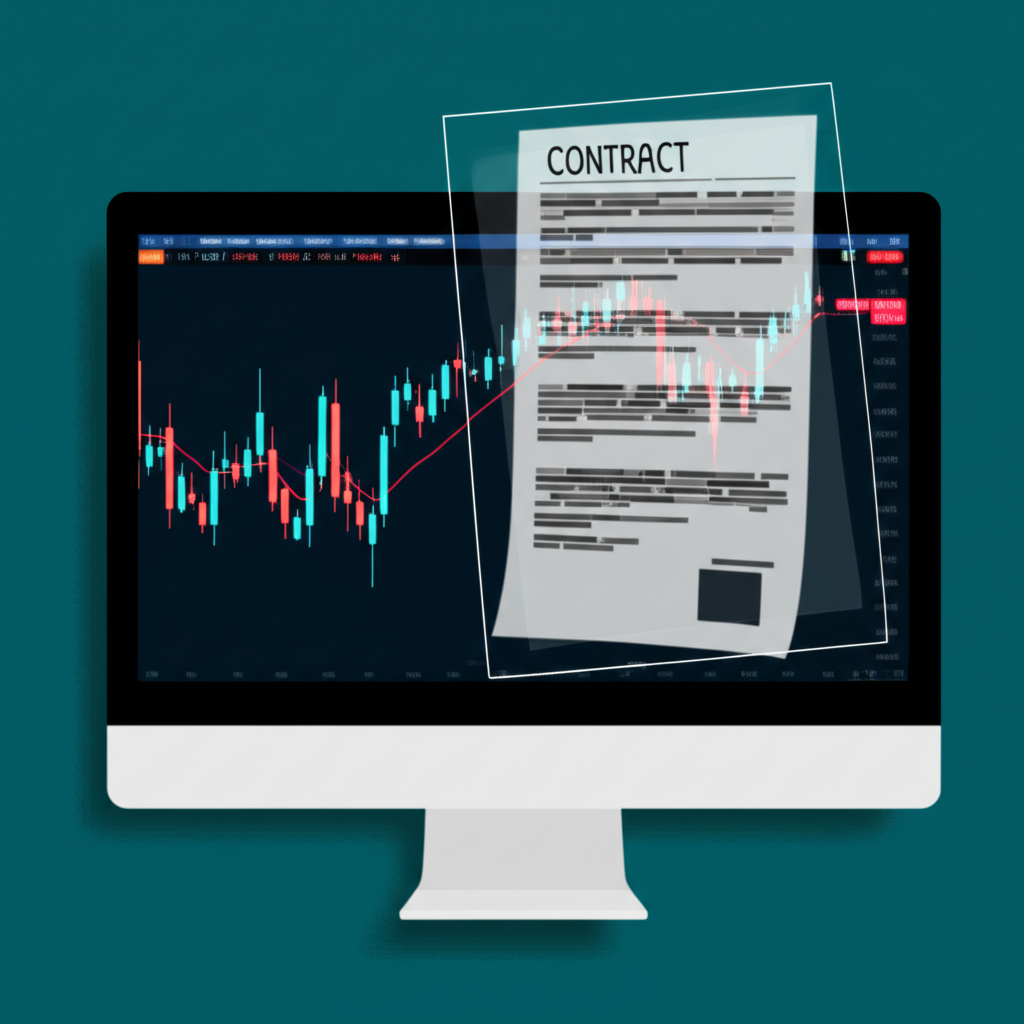
Crypto CFDs: 7 Key Advantages for Trading Digital Assets Without Ownership
Table of Contents
ToggleWhat Are Crypto CFDs? A Beginner’s Guide
Contracts for Difference (CFDs) in the cryptocurrency space offer a flexible and increasingly popular way to engage with digital asset markets—without ever needing to own the underlying coins. Instead of buying Bitcoin, Ethereum, or other cryptocurrencies directly, traders use Crypto CFDs to speculate on price movements, profiting from both upward and downward shifts in value. This financial instrument allows market participation while sidestepping the technical complexities of blockchain ownership, such as wallet management and private key security.

The concept isn’t new—CFDs originated in the early 1990s in London, where institutional investors used them to hedge stock positions and gain leveraged exposure to equity markets. Over time, their application expanded across asset classes like forex, commodities, and indices. As crypto gained traction, brokers began offering CFDs tied to digital currencies, allowing traders to tap into one of the most volatile and dynamic markets in finance. This evolution has made it possible for individuals to benefit from crypto price swings without navigating blockchain infrastructure.

How Do Contracts for Difference (CFDs) Work?
At its core, a Crypto CFD is a financial agreement between a trader and a broker. The value of the contract changes in real-time based on the underlying cryptocurrency’s market price. When you open a trade, you’re not acquiring actual Bitcoin or Ethereum—you’re entering into a contract that reflects the digital asset’s performance.

The process begins with choosing a direction. If you believe Bitcoin’s price will rise, you go long by opening a buy position. If you expect a drop, you go short with a sell order. Your profit or loss is calculated by the difference between the entry and exit prices, multiplied by the size of your position. For example, if you open a $5,000 long position on Ethereum and close it when the price increases by 4%, your gain would be $200—minus any applicable fees.
A defining feature of CFD trading is leverage. This allows traders to control large positions with a relatively small deposit, known as margin. A 1:10 leverage ratio means that with just $1,000, you can open a $10,000 trade. While this magnifies potential profits, it also increases the risk of significant losses. Most brokers charge a spread—the difference between the bid and ask price—and may apply overnight financing costs for positions held past the trading day, especially in leveraged setups.
Key Differences: Crypto CFDs vs. Direct Crypto Trading
Both Crypto CFDs and direct crypto trading aim to generate returns from market fluctuations, but they operate under fundamentally different models.
- Ownership: With direct trading, you own the actual cryptocurrency, which you can store in a wallet and transfer freely. In contrast, CFD trading involves no ownership—only speculation on price changes.
- Storage and Security: Holding real crypto requires managing digital wallets and securing private keys. CFD traders bypass this responsibility entirely, as the broker handles the underlying asset.
- Leverage: While some spot exchanges offer limited leverage, it’s a built-in feature of most CFD platforms, allowing for greater exposure with less capital.
- Short Selling: Going short is straightforward with CFDs—you don’t need to borrow assets. On spot markets, shorting often involves complex margin protocols and borrowing fees.
- Fees: Direct trading typically incurs exchange and withdrawal fees. CFDs are costed through spreads, overnight swaps, and sometimes commissions, depending on the broker.
- Regulation: The regulatory treatment of CFDs differs from that of spot crypto transactions. In regions like the U.S., CFDs face stricter oversight, particularly for retail investors.
The Advantages of Trading Crypto CFDs
For many traders, the appeal of Crypto CFDs lies in their flexibility, accessibility, and strategic advantages.
- Leverage: By controlling larger positions with minimal capital, traders can amplify returns. This makes CFDs particularly attractive to those with limited funds but a high tolerance for risk.
- Short Selling: The ability to profit from falling prices gives traders an edge in bear markets. In a space as volatile as crypto, this flexibility can be a powerful tool.
- Market Access: Many CFD brokers offer a wide range of cryptocurrencies—including Bitcoin, Ethereum, and various altcoins—alongside other financial instruments like forex and indices, all accessible from one platform.
- No Wallet Required: Traders avoid the technical burden of managing cold or hot wallets, reducing barriers to entry and eliminating risks related to lost keys or hacking.
- Capturing Volatility: Cryptocurrencies are known for rapid price swings. CFDs allow traders to capitalize on these movements, especially when combined with leverage and tight execution.
- Liquidity: Reputable brokers aggregate liquidity from multiple sources, offering competitive spreads and faster trade execution, particularly for major coins like BTC and ETH.
Navigating the Risks of Crypto CFD Trading
Despite their benefits, Crypto CFDs carry serious risks that demand careful attention and disciplined risk management.
- Amplified Losses from Leverage: While leverage boosts gains, it can also result in losses that exceed your initial deposit. A small adverse price move can trigger a margin call, forcing you to add more funds or face automatic liquidation.
- Extreme Volatility: Crypto markets can shift dramatically within minutes due to news, regulatory announcements, or macroeconomic factors. Such unpredictability makes position management challenging.
- Counterparty Risk: Since you’re trading with a broker rather than directly on an exchange, your success depends on the broker’s solvency and integrity. Choosing a well-regulated provider is essential.
- Liquidity Gaps: While major cryptocurrencies are highly liquid, some altcoins offered as CFDs may suffer from low trading volume, leading to slippage and wider spreads during fast-moving markets.
- Regulatory Uncertainty: Global regulators continue to refine rules around crypto derivatives. Sudden changes can affect which assets are available, leverage limits, or even the legality of certain platforms.
- Overnight Costs: Holding leveraged positions overnight incurs financing fees, which can accumulate and erode profits—especially on long-term trades.
Successful traders mitigate these risks through strategies like setting stop-loss orders, limiting position sizes, and avoiding over-leveraging. Understanding margin requirements and maintaining sufficient capital buffers are equally important.
Crypto CFD Regulations: A Global and US Perspective
The regulatory framework for Crypto CFDs varies widely across regions, influencing how and where traders can access these instruments. In many countries, CFD trading is permitted but subject to investor protection rules. For example, the European Securities and Markets Authority (ESMA) has imposed restrictions on leverage for retail clients and mandated negative balance protection to prevent traders from losing more than their account balance.
Why Are CFDs Not Allowed in the US for Retail Traders?
In the United States, retail investors are generally prohibited from trading CFDs. This restriction comes from key financial regulators—the Commodity Futures Trading Commission (CFTC) and the Securities and Exchange Commission (SEC)—who view CFDs as high-risk products unsuitable for the average investor.
Several factors underlie this stance:
- Investor Protection: Regulators aim to shield inexperienced traders from complex, leveraged products that often lead to substantial losses.
- Lack of Central Clearing: Unlike exchange-traded futures, CFDs are over-the-counter (OTC) agreements between two parties. The absence of a central clearinghouse increases systemic and counterparty risk.
- High Leverage Concerns: The potential for rapid account depletion due to leveraged trading is a major regulatory worry, especially among retail participants.
- Legal Classification: In some cases, CFDs may fall under the definition of security-based swaps, which require strict registration and compliance—conditions most offshore CFD providers do not meet.
- Market Structure: The U.S. financial system emphasizes transparency and oversight. OTC derivatives like CFDs operate outside this framework, creating jurisdictional and compliance challenges.
As a result, no licensed U.S. broker can legally offer CFDs to domestic clients. While some Americans may attempt to use offshore platforms, doing so exposes them to legal ambiguity, lack of regulatory recourse, and potential tax reporting complications.
Choosing the Right Crypto CFD Trading Platform
Selecting a trustworthy trading platform is one of the most critical decisions for anyone entering the CFD market. The right broker can enhance security, reduce costs, and improve overall trading efficiency.
Key factors to consider include:
- Regulation: Look for platforms regulated by reputable authorities such as the UK’s Financial Conduct Authority (FCA), Australia’s ASIC, or Cyprus’ CySEC. These bodies enforce capital requirements and client protection standards.
- Available Cryptocurrencies: Confirm that the broker offers CFDs on the coins you’re interested in, from Bitcoin and Ethereum to emerging altcoins.
- Spreads and Fees: Compare bid-ask spreads and any additional charges, including overnight financing. Tighter spreads mean lower transaction costs, especially for frequent traders.
- Leverage Options: Check the maximum leverage offered and ensure it aligns with your risk tolerance. Be aware that regulations in your region may cap leverage levels.
- Platform Features: Opt for platforms with intuitive interfaces, advanced charting tools (such as TradingView integration), real-time data, and a full suite of order types including stop-loss and take-profit.
- Customer Support: Reliable, responsive support can make a big difference during volatile market events or technical issues.
- Security: Ensure the platform uses strong encryption, two-factor authentication (2FA), and segregates client funds from operational capital.
- Demo Account: Many brokers offer free demo accounts with virtual funds, allowing you to test strategies and get comfortable with the platform before going live.
Notable platforms known for CFD trading include OANDA, easyMarkets, and XTB. However, availability—especially for crypto CFDs—depends on your location and local regulations. Always perform thorough due diligence before depositing funds.
Top Cryptocurrencies Available for CFD Trading
The availability of crypto CFDs depends on market demand, liquidity, and regulatory acceptance. Most brokers prioritize major digital assets with established track records and high trading volumes.
- Bitcoin (BTC): The original cryptocurrency and the most widely offered CFD asset, often featuring tightest spreads and highest liquidity.
- Ethereum (ETH): As the leading smart contract platform, ETH is a staple in nearly every CFD lineup.
- Ripple (XRP): Popular among traders focused on financial institutions and cross-border payment developments.
- Litecoin (LTC): One of the earliest altcoins, valued for its fast transaction times and consistent market presence.
- Cardano (ADA), Solana (SOL), Polkadot (DOT): Next-generation blockchains with active ecosystems and growing investor interest.
- Dogecoin (DOGE), Shiba Inu (SHIB): Meme-driven coins known for extreme volatility and speculative trading appeal.
Brokers assess each asset based on liquidity, price stability, and regulatory risk. While major coins are typically safe bets, access to smaller altcoins can vary significantly between providers.
Advanced Strategies for Crypto CFD Traders
Experienced traders often move beyond simple directional bets to deploy more sophisticated approaches that take advantage of market structure and volatility.
- Hedging: If you hold a large amount of physical Bitcoin but anticipate a short-term market dip, you can open a short Bitcoin CFD position. This can offset portfolio losses if prices fall, acting as insurance against downside risk.
- Arbitrage Opportunities: Though rare and fleeting, minor price differences between CFD brokers or between a CFD and a spot exchange can be exploited—though high-frequency algorithms often close these gaps instantly.
- Technical Analysis: Using indicators like moving averages, RSI, MACD, and Bollinger Bands helps predict price trends. In crypto markets, identifying support and resistance levels is crucial due to recurring breakout patterns.
- Trend Following: Entering long positions during uptrends and shorting during downtrends allows traders to ride momentum and maximize gains.
- Breakout Trading: Capitalizing on price movements that breach key resistance or support levels, often accompanied by increased volume.
- Scalping and Day Trading: Short-term strategies that involve opening and closing multiple positions within a single session, relying on small price changes and high leverage.
- Stop-Loss and Take-Profit Orders: These tools are essential for disciplined trading. Stop-loss orders limit losses, while take-profit orders lock in gains automatically—critical in fast-moving crypto markets.
Crypto CFDs in an Institutional Context
While U.S. retail traders face significant restrictions, institutional players around the world increasingly use Crypto CFDs as part of broader investment and risk management strategies.
For hedge funds, proprietary trading firms, and large asset managers, CFDs offer several strategic benefits:
- Efficient Market Exposure: Institutions can gain broad access to crypto markets without managing multiple exchange accounts, wallets, or custody solutions.
- Hedging Large Holdings: Firms with substantial crypto portfolios use short CFD positions to hedge against price drops, much like using futures in traditional finance.
- Capital Efficiency: Leverage allows institutions to deploy capital more effectively, enhancing returns on well-researched trades.
- Flexible Shorting: The ease of initiating short positions supports market-neutral strategies and bearish outlooks without borrowing assets.
- Liquidity Provision: Some institutions act as market makers in the CFD space, providing liquidity and earning from bid-ask spreads.
- Regulatory Navigation: Sophisticated firms may leverage global regulatory differences to access CFD markets restricted in their home jurisdictions, using legal structures to maintain compliance.
Platforms like Talos, designed specifically for institutional crypto trading, reflect growing demand for advanced derivative products—including CFDs—that integrate with enterprise-grade infrastructure, APIs, and risk systems.
Conclusion: Is Crypto CFD Trading Right for You?
Crypto CFD trading offers a compelling alternative for those looking to engage with digital asset markets without the complexities of blockchain ownership. With leverage, short-selling capabilities, and access to a wide range of coins, it provides tools to profit in both rising and falling markets. For experienced traders, it can be a powerful component of a diversified strategy.
But the same features that amplify rewards also increase risk. Leverage can wipe out accounts quickly, volatility can trigger unexpected losses, and regulatory environments remain fluid—especially in the U.S., where retail access is blocked. Success requires more than just market knowledge; it demands discipline, robust risk controls, and a clear understanding of how CFDs work.
If you’re considering this path, start with education. Use demo accounts to practice, choose a regulated broker, and never risk more than you can afford to lose. Whether Crypto CFDs fit your goals depends on your risk appetite, trading experience, and long-term financial objectives. Approach with caution, and you may find a valuable tool in your trading arsenal.
What are the fundamental principles of crypto CFDs?
The fundamental principle of crypto CFDs is speculation on the price movement of a cryptocurrency without owning the actual asset. You enter a contract with a broker to exchange the difference in the asset’s price from when you open the trade to when you close it. This allows for profit from both rising (long) and falling (short) markets, typically using leverage.
How does leverage impact crypto CFD trading outcomes?
Leverage significantly amplifies both potential profits and losses. With leverage, you can control a larger position with a smaller amount of capital (margin). For example, 1:10 leverage means you can trade $10,000 worth of crypto with only $1,000 of your own money. While this can lead to substantial gains from small price movements, a small adverse movement can result in losses that exceed your initial investment, potentially leading to a margin call or liquidation.
What specific regulatory challenges do US traders face when considering crypto CFDs?
US traders face significant regulatory challenges as Contracts for Difference (CFDs) are largely prohibited for retail investors within the United States. This is due to concerns from regulators like the CFTC and SEC regarding investor protection, the high leverage involved, and the over-the-counter (OTC) nature of CFDs which lack central clearing. While US citizens might technically access offshore platforms, this comes with legal and financial risks, including a lack of regulatory recourse.
Can I trade minor cryptocurrencies using CFD platforms, or is it limited to major ones like Bitcoin and Ethereum?
The availability of cryptocurrencies for CFD trading varies by platform. While major cryptocurrencies like Bitcoin and Ethereum are almost universally offered, many platforms also provide CFDs for a selection of minor or “altcoin” cryptocurrencies. The range depends on the broker’s offerings, market liquidity, and regulatory considerations for specific assets. It’s best to check a platform’s asset list before signing up.
What are the best practices for managing risk in crypto CFD trading, given the market’s volatility?
- Use Stop-Loss Orders: Automatically close a position if the price moves against you to a specified level, limiting potential losses.
- Manage Leverage Wisely: Avoid excessive leverage, especially with highly volatile assets. Understand margin requirements.
- Diversify: Don’t put all your capital into a single trade or cryptocurrency.
- Position Sizing: Only risk a small percentage of your total trading capital on any single trade.
- Stay Informed: Keep up-to-date with market news, technical analysis, and regulatory changes.
- Trade with a Plan: Define your entry/exit points and risk parameters before entering a trade.
How does the tax treatment of crypto CFDs differ from direct cryptocurrency investments?
The tax treatment of crypto CFDs can differ from direct cryptocurrency investments and varies significantly by jurisdiction. Generally, profits from crypto CFDs are often treated as capital gains or income from derivatives trading, similar to other financial instruments, rather than gains from the sale of an underlying asset. Direct crypto investments, on the other hand, involve capital gains tax when the actual cryptocurrency is sold at a profit. It’s crucial to consult with a tax professional in your specific region to understand your obligations.
Are there any specific trading platforms that integrate well with tools like TradingView or MT5 for crypto CFDs?
Yes, many prominent CFD brokers offer integrations with popular trading tools. MetaTrader 5 (MT5) is a widely used platform for CFD trading, and many brokers provide access to their crypto CFD offerings through MT5. TradingView is also a popular charting and analysis platform, and a growing number of brokers allow direct trading through TradingView’s interface or offer their own platforms with robust charting capabilities similar to TradingView. Examples of brokers that often support these integrations include OANDA, Pepperstone, and IG, though availability for crypto CFDs specifically can vary by region.
What are the typical fees and spreads associated with crypto CFD trading?
The typical fees in crypto CFD trading include:
- Spreads: This is the primary cost, the difference between the buy (ask) and sell (bid) price of a cryptocurrency CFD. Spreads vary based on liquidity and volatility, often being wider for less popular cryptos.
- Overnight Financing (Swap) Fees: If you hold a CFD position open overnight, you’ll incur a small fee. This is the cost of borrowing the funds used to maintain your leveraged position.
- Commissions: Some brokers might charge a commission per trade, though many operate on a spread-only model for CFDs.
- Inactivity Fees: Some platforms may charge a fee if your account remains dormant for an extended period.
What are the key considerations for institutional investors looking into crypto CFDs?
For institutional investors, key considerations for crypto CFDs include:
- Scalability and Liquidity: The ability to execute large trades without significant slippage.
- Advanced Risk Management Tools: Sophisticated features for hedging and managing complex portfolios.
- Regulatory Compliance: Ensuring the CFD offerings align with institutional regulatory frameworks and reporting requirements.
- Customizable Leverage: Access to tailored leverage options suitable for institutional risk profiles.
- API Access: Integration with existing institutional trading systems for automated strategies.
- Robust Custody Solutions: While not directly owning the asset, understanding the broker’s underlying asset custody.
- Counterparty Reliability: The financial stability and reputation of the CFD provider.
Is it possible to practice crypto CFD trading with a demo account before committing real capital?
Yes, it is highly recommended to practice crypto CFD trading with a demo account before using real capital. Most reputable CFD brokers offer free demo accounts that simulate real market conditions using virtual funds. This allows you to familiarize yourself with the platform, test trading strategies, understand leverage and margin mechanics, and manage risk without any financial exposure. It’s an invaluable tool for both beginners and experienced traders to refine their skills.
You may also like
Calendar
| 一 | 二 | 三 | 四 | 五 | 六 | 日 |
|---|---|---|---|---|---|---|
| 1 | 2 | 3 | 4 | 5 | 6 | 7 |
| 8 | 9 | 10 | 11 | 12 | 13 | 14 |
| 15 | 16 | 17 | 18 | 19 | 20 | 21 |
| 22 | 23 | 24 | 25 | 26 | 27 | 28 |
| 29 | 30 | 31 | ||||
發佈留言
很抱歉,必須登入網站才能發佈留言。